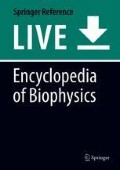References
Altschul SF, Gish W, Miller W, Myers EW, Lipman DJ (1990) Basic local alignment search tool. J Mol Biol 215:403–410
Altschul SF, Madden TL, Schaffer AA, Zhang J, Zhang Z, Miller W, Lipman DJ (1997) Gapped BLAST and PSI-BLAST: a new generation of protein database search programs. Nucleic Acids Res 25:3389–3402
de Lima Morais D, Fang H, Rackham OJL, Wilson D, Pethica R, Chothia C, Gough J (2011) SUPERFAMILY 1.75 including a domain-centric gene ontology method. Nucleic Acids Res 39:D427–D434
Jones DT (1999) Protein secondary structure prediction based on position-specific scoring matrices. J Mol Biol 292:195–202
Jones DT (2001) Predicting novel protein folds by using FRAGFOLD. Proteins 45(Suppl 5):127–32
Kryshtafovych A, Krysko O, Daniluk P, Dmytriv Z, Fidelis K (2009) Protein structure prediction center in CASP8. Proteins 77(Suppl 9):5–9
Kryshtafovych A, Monastyrskyy B, Fidelis K (2016) CASP11 statistics and the prediction center evaluation system. Proteins 84(Suppl 1):15–19
Lee J, Wu S, Zhang Y (2009) Ab initio protein structure prediction. In: From protein structure to function with bioinformatics. Springer, London, pp 1–26
Lipman DJ, Pearson WR (1985) Rapid and sensitive protein similarity searches. Science 227:1435–1441
Maghrabi AHA, McGuffin LJ (2017) ModFOLD6: an accurate web server for the global and local quality estimation of 3D protein models. Nucleic Acids Res 45:W416–W421
McGuffin LJ (2008a) Aligning sequences to structures. In: Methods in molecular biology. Humana Press, Clifton, pp 61–90
McGuffin LJ (2008b) Protein fold recognition and threading. In: Computational structural biology. World Scientific, London, pp 37–60
McGuffin LJ, Jones DT (2003) Improvement of the GenTHREADER method for genomic fold recognition. Bioinformatics 19:874–881
McGuffin LJ, Roche DB (2010) Rapid model quality assessment for protein structure predictions using the comparison of multiple models without structural alignments. Bioinformatics 26:182–188
McGuffin LJ, Street S, Sorensen SA, Jones DT (2004) The genomic threading database. Bioinformatics 20:131–132
McGuffin LJ, Smith RT, Bryson K, Sorensen SA, Jones DT (2006) High throughput profile-profile based fold recognition for the entire human proteome. BMC Bioinf 7:288
McGuffin LJ, Atkins JD, Salehe BR, Shuid AN, Roche DB (2015) IntFOLD: an integrated server for modelling protein structures and functions from amino acid sequences. Nucleic Acids Res 43:W169–W173
Moult J, Fidelis K, Kryshtafovych A, Rost B, Tramontano A (2009) Critical assessment of methods of protein structure prediction – round VIII. Proteins 77(Suppl 9):1–4
Needleman SB, Wunsch CD (1970) A general method applicable to the search for similarities in the amino acid sequence of two proteins. J Mol Biol 48:443–453
Roche DB, Bruls T (2015) The enzymatic nature of an anonymous protein sequence cannot reliably be inferred from superfamily level structural information alone. Protein Sci 24:643–650
Roche DB, Buenavista MT, Tetchner SJ, McGuffin LJ (2011) The IntFOLD server: an integrated web resource for protein fold recognition, 3D model quality assessment, intrinsic disorder prediction, domain prediction and ligand binding site prediction. Nucleic Acids Res 39:W171–W176
Smith TF, Waterman MS (1981) Identification of common molecular subsequences. J Mol Biol 147:195–197
Soding J (2005) Protein homology detection by HMM-HMM comparison. Bioinformatics 21:951–960
Yeats C, Lees J, Reid A, Kellam P, Martin N, Liu X, Orengo C (2008) Gene3D: comprehensive structural and functional annotation of genomes. Nucleic Acids Res 36:D414–D418
Author information
Authors and Affiliations
Corresponding author
Editor information
Editors and Affiliations
Section Editor information
Rights and permissions
Copyright information
© 2018 European Biophysical Societies' Association (EBSA)
About this entry
Cite this entry
Roche, D.B., Buenavista, M.T., McGuffin, L.J. (2018). Protein Structure Prediction and Structural Annotation of Proteomes. In: Roberts, G., Watts, A. (eds) Encyclopedia of Biophysics. Springer, Berlin, Heidelberg. https://doi.org/10.1007/978-3-642-35943-9_418-1
Download citation
DOI: https://doi.org/10.1007/978-3-642-35943-9_418-1
Received:
Accepted:
Published:
Publisher Name: Springer, Berlin, Heidelberg
Print ISBN: 978-3-642-35943-9
Online ISBN: 978-3-642-35943-9
eBook Packages: Springer Reference Biomedicine and Life SciencesReference Module Biomedical and Life Sciences

